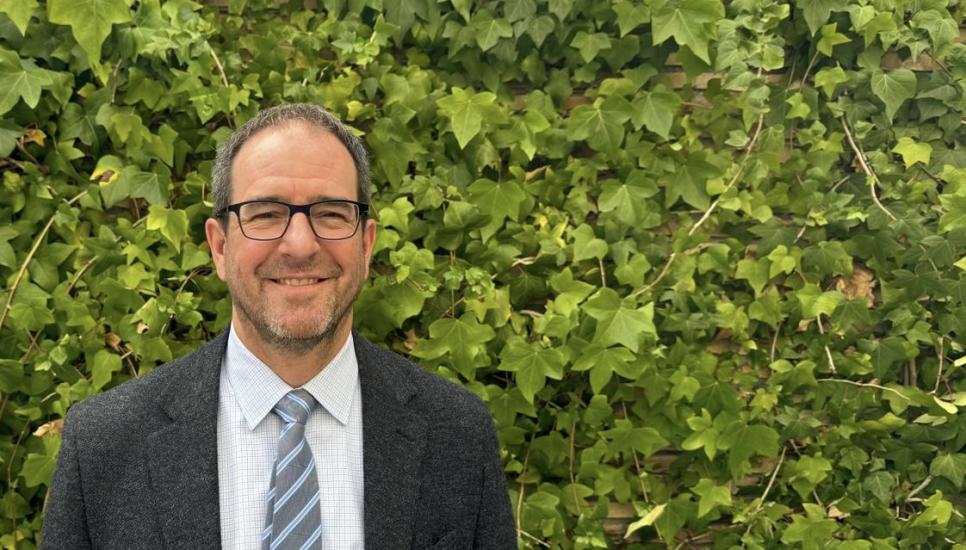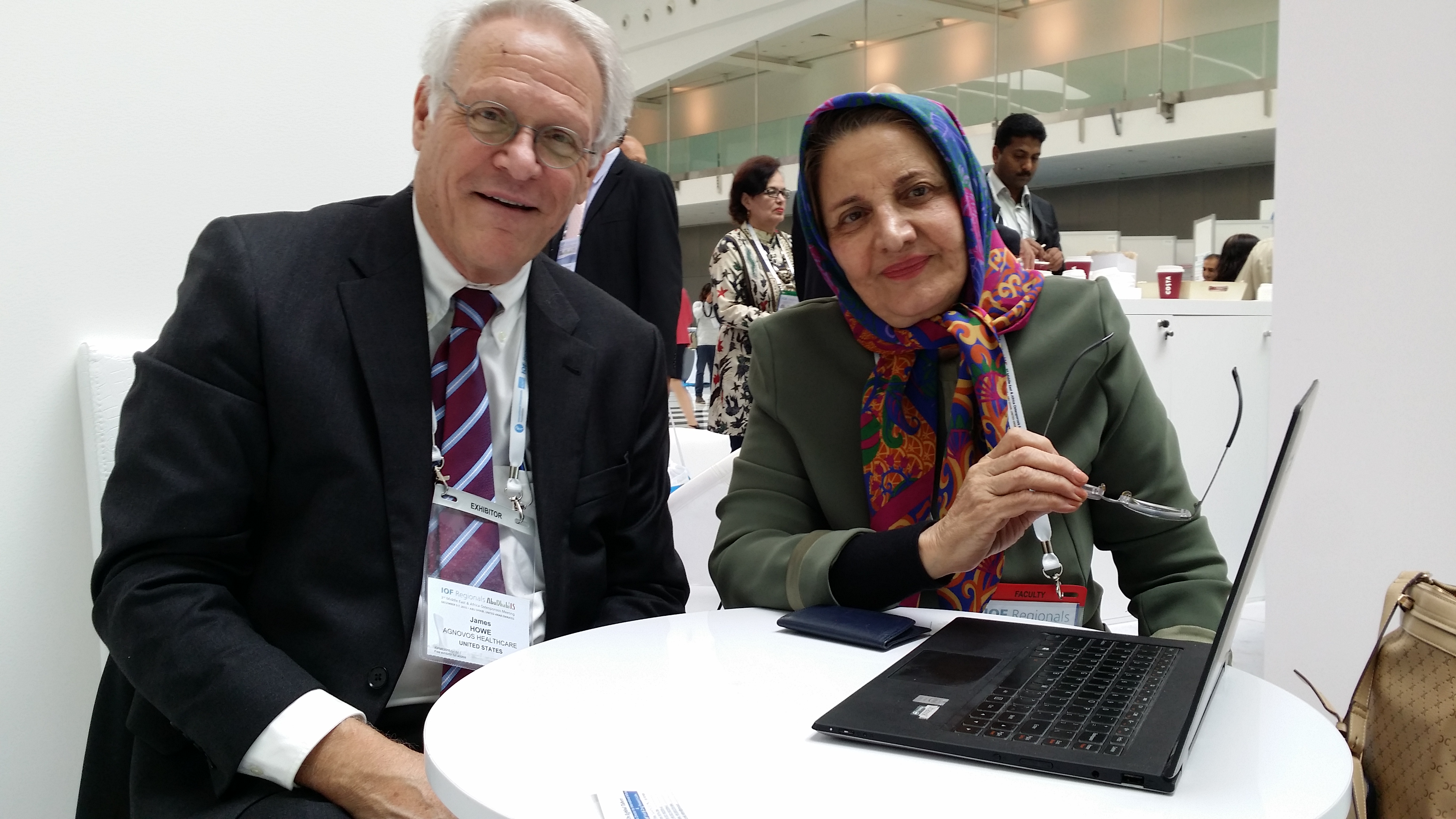A novel approach to prevent hip fractures – extending life expectancy for women and men

- AgNovos Bioscience has developed a regenerative platform technology to strengthen bones, aiming to prevent fractures, particularly hip fractures, in ageing women.
- The core market for this treatment in regions like North America, Europe, and Japan is valued at more than $4 billion, with 1.4 million hip fractures occurring annually. The total market is over $150 billion.
- Robert Stiller’s involvement brought entrepreneurial and strategic expertise. Series B1 funding will focus on completing the final trial to receive U.S. approval and preparing for commercialisation.
AgNovos Bioscience is a medical technology company addressing the problem of osteoporosis, an illness that affects one in three women and 1 in 5 men over the age of 50, head-on. Founded by the father and son team of Dr. James and Tanner Howe, in 2012, it has been predominantly backed so far by a single family – the Stiller Family, headed by Robert Stiller, the founder of Keurig Green Mountain coffee or the K-Cup and the author of a book about the company, Better and Better, which shows the efficacy of an engaged workforce, a higher purpose and of making the world a better place.
Here, Tanner Howe talks to CampdenFB about the underserved and under-reported problem of osteoporosis, navigating the pathway to US Food and Drug Administration (FDA) approval, and where he wants to take the company next.
Could you talk me through the founding of AgNovos?
Tanner Howe: We like to think of AgNovos as a family-owned business formed by my dad, Dr James Howe, and I in partnership with the Stiller family. This story starts in the mid-1990s, with my father, an orthopaedic surgeon, who chaired the Department of Orthopedics and Rehabilitation at the University of Vermont during his 35-year career.
During the week, he focused on his core area of expertise, complex procedures, particularly total hip revisions, which require advanced surgical techniques and the use of cutting-edge materials like DBM, bone grafts and various specialised cements. On weekends, his work predominantly involved treating hip fractures in elderly women who had suffered what’s known as a fragility fall – essentially a fall from standing height. One day, he had a sick patient who needed a hip revision. When doing the hip replacement he used a new material he was experimenting with to help stabilise the bone, hoping it would help because her bones were in extremely poor condition. About six months later, the patient developed an unrelated systemic infection with complications requiring the removal of the hip. When my father extracted the replacement, he was stunned to find that the patient had healthy bone where he had used this new material. It appeared the material created healthy bone.
This sparked a question that started the AgNovos journey: What if there was a way to strengthen bones and prevent devastating hip fractures, especially in ageing women? The idea to prevent, rather than just treat, hip fractures was born.
In 2008, I helped my father bring this idea to a medical company and they funded the first human trial of the technology, which yielded remarkable outcomes, but they ran into their own problems preventing them from taking this to market.
So in 2012, we took matters into our own hands and founded AgNovos, it was just too important a problem and too big a financial opportunity not to pursue.
Bob who was a family friend did extensive research with McKinsey to validate the concept and stepped in to fund the AgNovos venture. Since then we have been working together with Bob and his son David, who are board members, to bring this technology to market.

How did the relationship with Robert Stiller evolve? What has he brought other than money?
Tanner Howe: Bob is a serial entrepreneur, his visionary mindset, entrepreneurial acumen, and well-documented success in creating high-engagement cultures are keys to success. His entrepreneurial spirit and strategic vision help steer our mission and set the company culture.
My father, being a surgeon, initially approached the problem through the lens of individual patients. Bob, on the other hand, saw the broader picture. He envisioned millions of women worldwide benefiting from this technology, extending the quality and the length of their lives. Fragility fractures don’t just break bones, they break families.
Can you put this into context? How much of a problem is osteoporosis?
Tanner Howe: It is a huge problem, not only for the person who fractures their hip but for their families as well as the constant care required can lead to financial ruin, emotional exhaustion and even resentment among family members. It is sad when people work their whole lives and look forward to retiring and enjoying their grandchildren and then die or are disabled and cannot walk independently. The best way to understand the significance of this issue is to recognise that osteoporosis is one of the biggest health challenges facing ageing women, and the resulting fractures are a major cause of death. The risk of a major osteoporotic fracture is greater than the combined risks of breast, uterine, and ovarian cancers. 600 million women and men globally – about 80% of whom are women – are either osteopenic (a precursor to osteoporosis) or osteoporotic. While women in their 50s might focus on these diseases, very few are thinking about osteoporosis at that stage, even though they’re either on track to develop it or are likely to be diagnosed with it in the near future. Additionally, osteoporotic hip fractures often lead to dire consequences, with a 25% mortality rate within five years and an even higher 45% mortality rate after a second fracture within 12 months.
To put things into perspective, one in three women over the age of 50 will experience an osteoporotic fracture, and globally, approximately three women die every five minutes from an osteoporotic hip fracture.
Now that we understand osteoporosis is a significant problem, can you tell us about your treatment in words our readers will understand?
Tanner Howe: The treatment concept is simple: regenerate the bone lost due to the disease in an effort to increase bone strength and reduce the risk of hip fracture. We accomplish this with a proprietary, resorbable biomaterial that grows bone, and when placed inside a specific bone, that bone gets stronger. In the case of osteoporotic hips, we use a simple surgical procedure we have developed to access the proximal femur – commonly referred to as the hip. We call this the local osteo-enhancement procedure. This surgical procedure is performed on the unfractured hip and requires a small skin incision to deliver our material directly into the hip. Our material immediately provides protection, and over the following 6-9 months is resorbed and replaced by bone. This should increase the hip’s strength; when the patient falls from standing height, they should not fracture. Our pivotal trial is trying to prove this as we speak.
This can be used in two scenarios. The first is in the trauma setting, when someone, say your grandmother fractures her hip, is taken to the hospital, the doctor fixes the fracture, and in the same procedure, she also receives our treatment on the other hip while there. This is important because once she fractures her hip, she is two to three times more likely to fracture the other hip, which has a combined risk of death and not walking independently of 70 to 80%. The second use case is in the elective setting, where a patient is determined to be at high risk for osteoporotic hip fracture using a validated methodology, of which there are several. In this case, your grandmother could schedule this procedure with her doctor, and she could receive our procedure on both hips before a fracture even happens. This preventive approach could stop the first fracture altogether. As an example of why someone would do this, for woman with osteoporosis, one woman in six will experience a hip fracture, with up to 25% dying in the first year, and another 20% dying within five years, with 40% of those who survive losing their ability to walk independently.
Given that you have been predominantly funded by a single family, does that make the upcoming funding round easier?
Tanner Howe: I think so, it shows someone with a deep understanding of what we are doing has committed to funding the organisation through more uncertain times. As we head toward the finish line with over 500 procedures and related data it is easier to see what a great opportunity this is. That said, there are significant challenges in the fundraising world, particularly when it comes to securing funding for breakthrough medical treatments in orthopaedics. Given the complexity of navigating the global regulatory environment, the current system is not well designed to support innovative medical solutions, and technologies focused on women’s health are often neglected.
In our case, moving forward in the field of osteoporosis has been incredibly challenging, but we are now in the home stretch – with just our pivotal trial to complete before US approval. We have been very fortunate to have the partnership and support of Bob Stiller and his family along the way. They have enabled us to meet all of the requirements of the global regulators while building advocacy around the world with groups in osteoporosis, like the International Osteoporosis Foundation.
Orthopedics is a complex field to advance transformational innovation and has historically been viewed as a “sleepy” area of medicine driven by incremental rather than transformational change. The premarket approval pathway we are following has a higher scientific bar than what is required for incremental change and is very similar to the drug approval pathway. While this makes our job harder, it also creates a substantial barrier to entry for others who would like to follow.
Without a family like the Stillers, AgNovos would not have been possible.
What is that money going to be used for?
Tanner Howe: The last round of funding was crucial to kickstarting our clinical trial. Specifically, it supported the launch of our pivotal trial, which is essentially the same as a Phase 3 drug trial. This is the final stage needed for approval in the US and for further international expansion. We completed the last fundraising in December, although it actually began in early 2021. The $60 million we raised provided us with funding from mid-2022 to the end of 2024. During this period, we were not only launching the pivotal trial for the hip, but we also received our hip CE Mark under the Medical Device Regulation in Europe, received breakthrough designation for our spine device and launched a clinical trial for our spine device.
This upcoming round of funding is designed to carry us through FDA approval, the next major value catalyst for the company. It will allow us to complete our pivotal trial, generating fracture reduction data for a device for the first time ever, and support the company as we navigate the approval process. Unlike other devices, our data will be so strong it will speak for itself, more like drug data than device data. Additionally, these funds will be instrumental in planning and preparing for the commercial launch of our product.
How do you make the shift from the early stages of a healthcare company, where you are focused on the science and the FDA, to the stage where you are launching commercially?
Tanner Howe: We have already put significant time and effort into evaluating the market and planning for commercialisation as it will be extremely exciting to actually realise our dream of transforming the treatment paradigm for the management of osteoporotic hip fractures.
Bob and I have put enormous thought into this transition, which has informed our approach to infrastructure, hiring and training. About three years ago, we shifted from a research-heavy employee base to one focused on clinical execution. This process was done thoughtfully with the team in mind, ensuring that those who were a good cultural fit found suitable roles within the company.
As we move forward, areas like research and development and regulatory won’t disappear – they’ll reorient their focus and start thinking about the next products and maintaining the compliance of our approved products. At the same time, other areas, like sales, marketing and medical affairs, will grow substantially. Bob, with his experience transforming the coffee industry with the K-Cup, has been instrumental in helping us envision how today’s world will evolve in the next few years. He’s particularly adept at looking ahead and preparing for the changes before they happen. We have also added independent board members with significant industry experience who have all launched and scaled products to assist us in this transition. This combined foresight has been invaluable to our organisation.
What’s your vision five years down the line? Where do you want to take the company?
Tanner Howe: Five years from now, we will have been approved in the U.S. and commercial for two years. As we discussed earlier, the market opportunity for this product is enormous. Depending on who you talk to, some believe it is more than $150 billion in total size. Our first target will be the trauma market in Europe, North America, and Japan, which is very easy to access and is still about $4 billion in size, with about 1.4 million hip fractures annually. Our goal would be to penetrate the trauma portion of the market rapidly and become the new standard of care. With our compelling data, patients, doctors and hospitals should be excited to perform our treatment and help us save millions of women’s lives globally. We would then naturally expand into the elective markets around these trauma centres. We believe this will result in significant financial returns to investors.
In five years, I’d like to see us treating over 200,000 women each year. The financial rewards are clear, but I’m more focused on the impact. Ultimately, I want the story to be 20 years from now, that we’ve improved the quality of life and extended life expectancy for women globally by five years. My hope is that we’ll be a highly stakeholder-engaged organisation with executional excellence that continues to grow, innovate, and truly make a difference in the world. We will continue the vision of bringing transformational medical innovations to underserved populations to save millions of lives.






